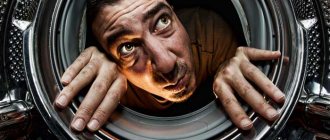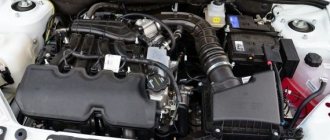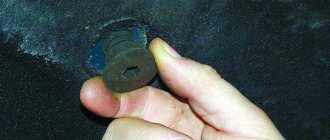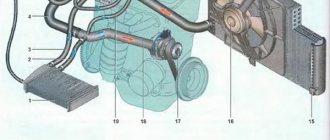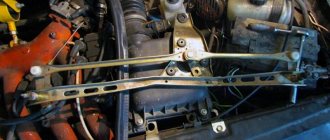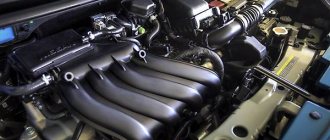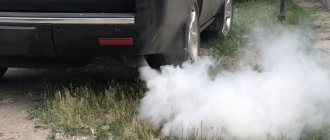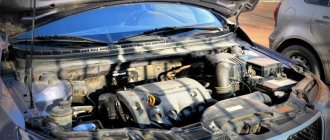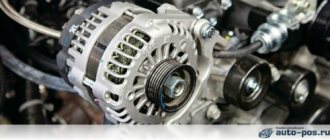Why doesn't the VAZ 2114 engine pull? List of possible causes
In the absence of obvious breakdowns, why does the VAZ 2114 engine not run?
The question is very relevant, especially for the domestic automobile industry. Often this category of car surprises us at the most unexpected moment. The driver then has to play a guessing game about where and what. In fact, there can be many reasons for the “weakness” of the engine. Not many people are able to clearly identify the source of the breakdown the first time. Only experienced drivers can boast of this. In order to provide methodological advice to new car owners, as well as to replenish the memory of experienced ones, we will carefully consider each of them. Why doesn't the VAZ 2114 engine pull? A simple solution would be to get to the nearest service station at low speed. If this is not the case, then let's start with a list of reasons so that it is clear where to look.
conclusions
Maintenance, which should be carried out according to the manufacturer’s recommendations, will avoid many problems. The only question is where to go, at the “Kulibins”, or at specialized service stations equipped with the necessary equipment and equipment. The choice is up to the vehicle owner. The sooner the prerequisites for the failure of a particular part are identified, the less financial losses there will be in the future . It should be remembered that timely maintenance increases the safe operation of the vehicle.
Many drivers are faced with a problem when the VAZ-2114 starts and immediately stalls; the reason can be hidden in any little thing. This is a common situation that should not cause the driver to panic. This happens often, and it does not depend on how long your car has been in use. There can be many reasons for this, so you should be prepared for the fact that it will take some time. Sometimes the driver is not able to independently figure out the cause of such a failure, so it makes sense to contact experienced specialists at a car service center. Sometimes the problem lies in the type of engine or in late technical inspection. Typically, such problems arise abruptly and unexpectedly, and therefore can cause trouble for the driver.
List of reasons for power loss
The fuel filter is dirty:
Gasoline with various additives in the form of debris, rust, wool passing through the filter, settles in it and clogs the channels. As a result, poor throughput makes it more and more difficult for the engine to pump fuel. Only complete replacement of the filter elements is necessary. Contamination can only be determined by eye. Read more in the article: “List of reasons that the fuel filter is clogged.”
Malfunction of the mass air flow sensor:
Perhaps the most common problem that causes the mixture to become rich or lean. You can test it in the following way: disconnect the terminal on the sensor and start the engine, a red lamp will light up on the display, indicating a breakdown in the system, no big deal.
The speed will increase significantly to 1500-2000 rpm. try driving a few hundred meters, if the car is the same as before, then buy a sensor at the nearest store. The reason for this is untimely replacement of the air filter.
The fuel pump diaphragm is clogged:
As is the case with filters, the cause is dirty gasoline. To clean, simply unscrew the fuel pump cover bolt, remove the diaphragm and clean it. Read about the signs of a faulty fuel pump.
Air filter clogged with dust:
The element can be compared to a person’s lungs; accordingly, the dirtier it is, the more difficult it is to breathe. If you don’t have a new filter at hand, but you need to drive further, you can take the filter out of the casing, blow it a little, and tap it on a hard surface. This way, some of the dust and dirt will be removed, and you can proceed further. You should carefully inspect for the presence of dry leaves, insects, and moths. Since only large obstacles can block the air supply.
Candles are fiddling:
Due to poor quality or significant wear, sometimes the spark charge “slips”, the fuel does not ignite fully, and the combustion chamber is literally choked with gasoline. It can be eliminated by completely replacing it with a new set or unscrewing everything one by one and looking at the color.
Typically, black or wet asphalt indicates excess gasoline and insufficient combustion. It is necessary to wipe with a dry cloth, preferably with “0” sandpaper and screw it back in. Getting to the nearest auto shop is all it takes to fix it. See Signs of Bad Spark Plugs.
Low compression in cylinders:
Boiling due to systematic overheating and high wear can cause a sharp drop in compression pressure in the engine. Which leads to the consumption of motor oil in large volumes, incomplete combustion in the chamber, air leaks, and gasoline getting into the oil pan. Here, improvised means will not help. The engine must be overhauled. It can only be determined by the presence of a mixture of fuel and oil on the dipstick. The article “How to check compression in cylinders” can help.
System failure in the on-board computer:
Factory defect or random computer glitch. There is only one way out - to get to a service station by any means and carry out diagnostics. It is not recommended to repair the firmware yourself, as this should only be done by a qualified specialist.
Injectors clogged:
The situation is also common and has two solutions. The first is a trip to the service station, the second is to get to the nearest car store and purchase an injector cleaner. Typically, this is a liquid in a bottle designed to be poured into a tank. While driving, passing through the fuel channels, it cleans them of various dirt and rye. The engine acquires the same dynamics and throttle response. But the product may not always be effective, it all depends on the degree of contamination.
- “How to check injectors”;
- “What should I use to clean the injectors?”
Of course, it is impossible to list all the reasons and answer why the VAZ 2114 engine does not pull. Because the most incredible and unusual situations happen in life. But every driver should know the main reasons so as not to get confused along the way and not find himself helpless.
Why does the VAZ 2114 engine pull poorly?
In short, the engine of the VAZ 2114 2008, the 8-valve engine, pulls poorly, now I clarify when starting the car, the engine seems to be trying to keep the correct speed, but suddenly and several times they drop, that is, as if trying to stall, then it returns to normal, and when accelerating, accelerating every gear, the engine tries to stall, but then it recovers sharply, and the traction is bad =( but you know, from time to time I admire when it starts to pull normally and accelerates quickly; the response to the gas pedal is instantaneous! I would really like it to always have good traction! But the consumption is very high. Please tell me how to get rid of this problem.
Given the symptoms you have, there can be quite a few reasons for this behavior of the car. If you say that sometimes the car drives well, then the problem is most likely not in the engine itself, but in the harness. First of all, you need to look at the sensors. You may have a stuck throttle position sensor or mass air flow sensor. Cleaning them sometimes helps in such cases.
You definitely need to look at the ignition coil and armored wires, maybe there is a break somewhere and there is a periodic spark leak, in the dark, start the engine, open the hood and look at the ignition system. If there is a breakdown, you will see it.
I know a case where a ceramic catalyst crumbled and periodically closed the passage in the exhaust pipe, the car behaved in a similar way. So, if you have a catalyst, this may be the reason.
And best of all, don’t rack your brains and go for computer diagnostics. There you will at least find out the reason, and then decide to repair it yourself or contact a service station.
Self-diagnosis in the garage
If you have problems with the operation of the injection system, you should first diagnose the ECU. In this regard, the owners of the VAZ 2114 are more fortunate with the German VDO instrumentation - it has a self-diagnosis mode. On cars with a dashboard from Schetmash there is no such functionality.
VDO dashboard for VAZ 2114
Working with the self-diagnosis mode on the VDO panel is carried out according to the following algorithm:
- With the ignition off, hold the odometer button for several seconds;
- turn the ignition to position “1”, release the button;
- if the arrows start running on the display, everything is fine, press once (information message about the firmware version) and release, with a second press an error code will appear;
- You can reset the error by holding the button until “0” appears.
Injection problems that cause the car to stall can be indicated by the numbers 1 (ECU error), 14,15 (coolant sensor errors), 22, 23 (DPS errors), 33, 34 (MAF errors), 42 (ignition malfunction) , 44, 45 (lean or rich mixture). The disadvantage of self-diagnosis on the VAZ 2114 is that if there are several errors, the system sums up the codes. Thus, the number “22” may mean a TPS error or low on-board voltage and a coolant sensor error (8 + 14).
The main reasons for the reduction in engine power
Crankshaft position sensor malfunction
There are situations when the DCPV untimely sends a control command to supply the air-fuel mixture. As a result, the power of the power unit drops before our eyes. The main cause of the failure is the shift of the toothed star relative to the pulley and the delamination of the damper. In such a situation, it is necessary to carefully inspect the damper and replace it.
Increasing (decreasing) the gap between the spark plug electrodes
During operation, due to strong temperature effects, the distance between the electrodes of the spark plug may decrease or increase. To exclude or confirm your suspicion, you need to check the size of the gaps using a round feeler gauge. If the distance is less or more than acceptable, you need to make an adjustment by bending the side of the electrode or replace the spark plug. As for the optimal spark gap distance, it can be different (depending on the type of spark plug) - 0.7-1.0 mm.
The appearance of carbon deposits on the spark plugs is another clear sign of a problem.
If the engine does not pull well, you need to unscrew all the spark plugs one by one and inspect them. If obvious carbon deposits appear on the electrodes, the device must be cleaned using a brush with metal bristles. It is important not only to clean the spark plugs or replace them, but also to find out the cause of this phenomenon.
Failure of spark plugs
A decrease in engine power may be caused by product failure. In this case, it is necessary to check the performance of the spark plug on a special stand. If the suspicions are confirmed, then the only way out is to replace the set or one spark plug.
There is no gasoline in the tank
You can diagnose the problem using the fuel level indicator. If it is faulty or there is a suspicion that it is “inadequate,” then the presence of fuel can be determined by removing the fuel pump.
Fuel filter contamination, water freezing in the system, pinched fuel wire, fuel pump failure
All these malfunctions can be safely classified into one category, because they all have the same symptoms - the starter cranks the engine, but there is no smell of fuel from the exhaust pipe. If the car has a carburetor, then the reason must be sought in the float chamber. Most likely, fuel is not supplied to it. In the case of an injector, it is easier to check the presence of fuel in the ramp by pressing a special spool (installed at the end of the ramp).
To correct the problem, you need to warm up the engine thoroughly and bleed the power system with a tire pump. After this, all system pipes, hoses and the fuel pump itself are changed.
Fuel pump produces too little pressure
This problem can only be determined by special measurements (taken directly at the outlet of the fuel pump). After this, the quality of operation of the fuel pump filter is checked.
The solution is to clean the fuel pump filter, replace it (if repair is not possible) or install a new fuel pump.
Poor contact quality in the circuit
Poor contact quality in the circuit that powers the fuel pump or failure of its relay. The first thing you need to do to check is to make sure the quality of the “ground” on the car and measure the resistance using a multimeter. If the resistance level is really too high, then the only way out is to clean the contact groups, crimp the terminals well, or install a relay (if the old one is faulty).
Failure of injectors or malfunction in the supply system
If there is a suspicion of failure of these elements, it is necessary to check the resistance of the windings using a multimeter for a break or an interturn short circuit. If the cause of the problem is a malfunction of the computer, then such a check can only be carried out at a service station.
There are several ways to eliminate a decrease in engine power for this reason (depending on the depth of the problem) - install a new ECU, clean all injectors, ensure good contact in the electrical circuit, and so on.
DPKV failure
Failure of the crankshaft position sensor or damage to its circuit. In such a situation, the Check Engine light comes on. The first thing to do is to inspect the integrity of the DCP itself, make sure that the gap between the ring gear and the sensor is normal (it should be about one millimeter). The normal resistance of the sensor coil is about 600-700 Ohms.
To solve the problem, it is enough to restore normal contact in the electrical circuit and install a new sensor (if the old one turns out to be faulty).
DTOZH is out of order
The DTOZH - the sensor that controls the temperature of the coolant - has failed. Symptoms of the malfunction are as follows: the engine malfunction lamp comes on. If there is a break, the system’s electric fan begins to rotate continuously. In addition, it is necessary to check the serviceability of the sensor itself.
If engine power has dropped for this reason, then it is necessary to restore the quality of contact in the electrical circuit and install a new sensor.
TPS is out of order
The TPS sensor, which monitors the correct position of the throttle valve (or its chain), has failed. As in previous cases, the “Check engine” lamp comes on here. If there is a break in the TPS circuit, then the engine speed usually does not drop below one and a half thousand revolutions.
The solution to the problem is to clean the throttle assembly and restore the quality of the contact connection throughout the entire electrical circuit. If the sensor is faulty and cannot be repaired, it must be replaced.
DMRV has failed
The mass air flow sensor, the sensor responsible for monitoring mass fuel consumption, has failed. The optimal action here is to check the integrity of the mass air flow sensor or replace it with a working device. If the failure of the mass air flow sensor is confirmed, then it is necessary to make an attempt to clean it, and if repair is impossible, simply replace it.
Knock sensor failure
Damage to the knock sensor. In the event of such a malfunction, the engine malfunction lamp necessarily lights up on the instrument panel. In addition, if the motor fails, there is no detonation in any of the operating modes of the power unit and the engine power also drops. With such a problem, the best option is to restore the integrity of the contact group in the electrical circuit and install a new sensor.
Oxygen sensor failure
The oxygen sensor is broken or its circuit is broken. This malfunction is characterized by the “Check engine” lamp coming on. In this case, the first thing to do is check the heating coil for integrity. Firstly, the resistance is measured, and secondly, the voltage level at the output. The measurement can be made even without breaking the circuit - just pierce the insulation with needles.
Lost engine thrust: why does this happen and what should the driver do?
As a rule, during the long-term operation of a vehicle, almost every driver sooner or later notices that the engine does not pull well. In other words, the power unit has difficulty coping with the loads, there is a loss of power, the unit needs to be cranked up to high speeds to maintain the usual pace, the car accelerates worse from a standstill, picks up speed slowly, etc.
At the same time, in many cases the engine runs smoothly, does not tremble, there are no increased vibrations, extraneous sounds, knocking or noise during operation of the internal combustion engine. Let us note right away that there is a fairly wide list of possible reasons why a warm engine does not run, and there is a loss of engine power when cold and/or when hot.
In this article we will talk about why the engine does not pull, and also consider the most common malfunctions that manifest themselves in the form of loss of traction of the power unit.
Read in this article
Check the fuel filler cap
Many drivers, in most cases, when the “check engine” indication appears, will think about serious problems in the car’s engine, but will not even think about checking the tightness of the fuel system, which may be compromised due to a defect or an insufficiently tightened fuel tank cap. This is a very common reason for the appearance of the “Check” engine icon.
Reason for the error: Leakage of the fuel system due to the passage of air through the filler cap of the fuel tank will increase the vehicle's fuel consumption, to which the vehicle's diagnostic system will generate an engine error by turning on the "Check engine" indication on the vehicle's instrument panel.
What needs to be done: If, when the “Check” indication appears, your car has not lost power, and there are no audible signs of engine damage (engine knocking, humming, creaking, etc.), then first check the gas tank for leaks. Your gas cap may be cracked or not tightened enough. If the cap was not tightened enough, then after tightening it all the way, continue driving the car for a while to see if the engine error disappears. To prevent a check engine light from appearing for this reason, check your fuel filler cap regularly. Remember that the cover must be replaced with a new one periodically!
The engine does not pull: the main reasons for the decrease in engine power
So, if no other symptoms other than loss of traction are detected, then you immediately need to pay attention to the quality of the fuel, the proper functioning of the ignition and power systems.
- As practice shows, more than half of the cases of reduced efficiency from internal combustion engines are associated with fuel. The engine does not turn on due to the fact that the tank may be filled with low-quality or unsuitable fuel for this type of engine (for example, 92-grade gasoline instead of 95-grade gasoline).
Typically, such manipulations are necessary when, parallel to the loss of traction, unstable operation of the internal combustion engine is noted, the speed jumps or floats at idle and under load, the engine does not start easily, the “check” light is on the panel, etc.
Also, owners of gasoline engines can independently determine the quality of gasoline by the spark plugs and their appearance. To check the spark plugs you need to unscrew them from the engine. A disruption in the combustion process of the fuel-air mixture in the cylinders, as well as the presence of impurities in the fuel, can be identified by soot on the spark plugs and its color.
For example, if the fuel contains a lot of third-party metal-containing additives and additives, then the skirt and electrodes may become covered with reddish soot (brick-colored). Black soot will indicate that the fuel is not burning properly, etc. In any case, malfunctions in the combustion process of the working mixture lead to the fact that the engine stops pulling.
- The next step in diagnosis is checking the spark plugs. A decrease in the efficiency of these elements is also accompanied by a decrease in the power of the power unit.
This is especially noticeable during sharp accelerations, and when the car is already moving at high speed. In other words, the motor has no “reserve” left for further acceleration.
The candles may be dirty, and it is also possible that their life has come to an end. To fix this problem, you can clean the spark plugs or immediately replace the entire set with a new one.
- If everything is in order with the spark plugs, then you need to check the condition of the fuel and air filters. In the first case, insufficient throughput can lead to the fact that the required amount of fuel is not supplied to the cylinders to prepare the so-called “power” mixture.
As a result, the engine loses power, that is, it does not pull under load. In such a situation, it is enough to replace the specified filter element. As for the air filter, the problem is similar to the fuel filter, but in this case there is a lack of air in the fuel-air mixture.
This leads to the fact that fuel without a sufficient amount of oxygen burns incompletely. In such conditions, engine power naturally drops, carbon deposits form in the combustion chamber, spark plugs become increasingly dirty, etc. To solve the problem, the engine air filter also needs to be replaced.
How to Avoid Failures
Having talked about how to eliminate gas pedal failures that occur on a car, it is worth talking about how to completely avoid their occurrence. So, the most common cause of their occurrence is wear of the spark plugs. Therefore, you should always check their condition, prevent clogging and oxidation, and, if necessary, replace them.
It is worth remembering that it is highly recommended to replace spark plugs as a “set”, even if only one of them is seriously damaged.
In addition to spark plugs, high-voltage wires should also be periodically monitored (despite the fact that they have a long service life, core breaks and breakdowns of protection are far from uncommon).
Another very common cause is clogged filters, and especially the air filter. This element is a direct participant in the chain of formation of the working mixture, and that is why its contamination (or even damage) can immediately affect the operation of the engine.
The last thing you should pay attention to in order to avoid unpleasant gas failures is the quality of the fuel. If you notice that at the nearest gas station it has dropped significantly (and the car reacts to this), then you should not continue to use it - it is better to try refueling at a pump of another company (or several companies). In this way, you can find the highest quality gas station and ensure reliable operation of your car’s engine.
Malfunctions of the power supply system, ignition and impaired mixture formation
While problems with spark plugs and filters can be identified on the road, more serious problems associated with the power and ignition system are much more difficult to diagnose and fix on site. In cases where the engine does not pick up speed, and jerks and dips are noted when pressing the gas pedal, it is necessary to check and adjust the carburetor or injector.
Let's focus on the more common electronic injection. The list of main malfunctions of modern injection internal combustion engines includes:
- malfunctions, decreased performance or contamination of the fuel pump mesh filter;
- malfunction of injection nozzles;
- problems with ECM or ECU sensors;
- ignition system malfunctions;
- air leaks and leaking fuel lines;
Often, on many cars, problems are associated with the fuel pump, which is located in the gas tank, as well as with the specified regulator. To measure fuel pressure, a pressure gauge is connected to the rail; the obtained values are compared with those recommended for a particular engine. If the pressure is below normal, then the culprit may be either the fuel pump or the pressure regulator.
Solving the problem of deteriorating vehicle traction
ZMZ-409 engineZMZ 409 engine In any case, the problem of a drop in vehicle power cannot be ignored. Having made itself felt today, it will progress every day and cause more and more inconvenience and will ultimately damage the engine. Timely computer diagnostics and a thorough inspection of the machine by a qualified specialist will help you get rid of the problem.
Replacing spark plugs, high-voltage wires, and an air filter can, of course, be done on your own if the need arises. But if, after installing new parts, the behavior of your personal vehicle has not changed for the better, it is worth sending it for diagnostics to a specialized service, where experienced technicians will diagnose the cause of the deterioration in traction of your car.
Source
Other reasons for reduced engine performance
The condition of the exhaust system also greatly influences engine power. The fact is that to protect the environment from harmful emissions during operation of the internal combustion engine, catalytic converters are installed in the exhaust.
As a rule, official services offer to replace a worn-out element, but the price of the spare part is very high. For this reason, on many cars in the CIS, the catalyst is simply knocked out, and the control unit is “deceived” by software or other available methods.
Also, when engine power decreases, it is necessary to separately check the installation of the timing belt or chain according to the marks in order to eliminate the possibility of valve timing failure. Sometimes there are situations when the belt can jump one tooth, the chain stretches, etc.
In this case, the synchronous operation of the valve mechanism in relation to the operating cycles of the internal combustion engine may be disrupted. This leads to various failures, unstable operation of the unit and reduced power.
Let us also add that engine wear and certain malfunctions also affect engine power. As a rule, worn-out internal combustion engines with mileage usually lose about 10% of their declared power.
One way or another, any leaks in the combustion chamber will lead to expanding gases breaking out of the cylinder during fuel combustion. This means that the pressure of these gases on the piston will decrease, and the internal combustion engine itself will draw poorly and operate unstably.
Finally, we note that the reason that the car has lost dynamics may not be the engine, but the transmission. In other words, the power unit develops enough power, but it is not fully transmitted to the wheels.
If, when coasting, it is noticeable that the car immediately begins to slow down, then the problem is obvious, the wheels are slightly blocked. If no problems with the brakes are identified, then automatic transmission diagnostics are necessary. It is better to entrust this procedure to experienced specialists by delivering the car to a service center.
Purpose, design features, installation location of the fuel pressure regulator of an injection engine. Signs of RTD malfunctions, checking the device.
As a result, jerks and dips appear when accelerating, and the car jerks in motion during transitional conditions. Causes and troubleshooting.
The most common reasons why an engine does not develop full power. Why do they occur? Common problems with gasoline and diesel engines.
Why the engine may not pick up speed: gasoline engine, diesel unit, car with LPG. Fault diagnosis, useful tips.
When you sharply press the gas pedal, the engine jerks, jerks and dips appear, the car does not pick up speed: the main causes of the malfunction and diagnostics.
Signs of a non-working cylinder (tribbing and vibration) of a diesel engine. Troubleshooting: compression, diesel injectors, glow plugs, injection pump and others.
Selecting and replacing the idle speed sensor
When choosing a new IAC, you need to consider some points:
- the distance from the protruding rod head to the flange should be no more than 23 millimeters;
- the last two digits of the catalog number of the new IAC must be similar, or with a subsequent number in relation to the old one being replaced (01-01 or 01-02, etc.).
Algorithm for replacing the XX sensor VAZ 2114:
- placing the car on a flat surface, tighten the handbrake and disconnect the negative terminal from the battery;
- Next you need to remove the protective casing from the power unit;
- loosen the clamp and remove it, holding the air filter pipe;
- Having slightly loosened the fastening screw of the cable from the gas pedal to the damper, use a rag to remove all dirt on and around the throttle assembly;
- Having treated the new rubber gasket that comes with the regulator with engine oil, secure the regulator with screws and make sure that it fits tightly to the throttle body;
- having returned the throttle assembly to its place, connect the connector, replace the cable, pipes and pipes, tightening all the clamps;
- put the engine protective cover back and calibrate the IAC by connecting the battery and turning on the ignition (within 10 seconds the ECU must perform the calibration on its own).
Why the VAZ-2114 engine pulls poorly: the main reasons and repairs
VAZ-2114 cars, from the start of production, are equipped with eight-valve engines with a volume of 1.5 liters. Since 2007, they have been equipped with an eight-valve 1.6 liter engine with an environmental class of Euro-4. The operation of the car, sometimes incorrectly, brings “surprises” over time. The engine does not perform its functions at full power, and thrust decreases. Let's try to understand the causes and methods of elimination.
If the car stalls in neutral...
There are a lot of reasons why a VAZ 2114 with an injector may not work properly when cold. Among them:
- “dying” fuel pump;
- IAC malfunction;
- injector clogging;
- DTOZh malfunction.
IAC (idle air control) is one of the “favorites” of VAZ owners. In addition to stalling, its malfunction is indicated by unstable idle speed. While driving, the car may stall when you switch off the gear or release the gas. The regulator is checked with a multimeter, measuring (with the ignition off) the resistance at the outputs. On pairs of terminals AB, CD there should be ≈ 53 Ohms. There is infinity between AC and BD. If this is not the case, the IAC needs to be cleaned or replaced.
Injector clogging is common due to fuel of questionable quality at half of the country's gas stations. Often the problem is solved by purging with an injector or carburetor cleaner. It's worse if the injectors are clogged. Sometimes it is possible to clean them manually using special chemicals, but more often only ultrasonic cleaning in the service or replacement can help.
The fuel pump does not always “die” immediately. More often than not, problems grow gradually. Listen to its sound when you turn the ignition. If it becomes louder or quieter than usual, this is a signal. Fuel pump malfunctions manifest themselves in different ways, to the point where the car cannot be started. If the car stalls in neutral or when braking, but operates normally in other modes, the fine filter mesh may be clogged.
Ignition. The ignition system on a VAZ does not fail very often, but this option cannot be discarded. The main source of problems is candles. Change them according to the regulations, and there will be no problems. The cause may also be high-voltage wires and the ignition module.
“Armored wires” never fail at the same time. Due to a malfunction of one or even two of them, the machine shakes a lot, but works. But the gradual failure of the ignition coil winding can be the reason that the car immediately stalls, and after starting it will work as if nothing had happened. If this situation repeats periodically without apparent logic, a short-term loss of spark may occur.
Is the engine running poorly? Main reasons
The dynamics of a car, first of all, depend on the stable and stable operation of the engine. When this characteristic decreases, it indicates that there are problems with the engine.
Unstable engine operation is caused by the following:
- The fuel filter is dirty.
- The fuel pump diaphragm is clogged.
- The air filter is clogged.
- Spark plugs do not work or work poorly.
- Insufficient compression in the cylinders.
- The on-board computer is malfunctioning.
- The injectors are clogged (they need to be cleaned or replaced).
- The clutch disc is worn.
- Malfunctions in the operation of sensors that monitor: the position of the crankshaft, throttle valve; coolant temperature; air flow; detonation.
These are only some of the possible reasons why the engine may not pull well throughout the entire speed range.
It is worth mentioning the fuel pump, which fails. The real state of affairs is determined by detailed diagnostics.
Mass fuel flow sensor (MAF)
This element is available in any injection VAZ. It is a plastic element, inside of which there is a thin platinum thread. When the driver turns on the ignition, voltage is applied to this thread, which increases the temperature due to high resistance. When the engine starts, the air that enters the pipe cools this thread. As a result, resistance and voltage change. This information is read by the controller. This is how the control unit “finds out” how much air has passed through the mass air flow sensor.
If the sensor is faulty, the ECU puts it into emergency mode. At the same time, a “check” lights up on the panel. Indirect signs of a malfunction of the mass air flow sensor are:
- Unstable engine operation at idle.
- Long-term start of the internal combustion engine.
- Poor acceleration dynamics.
- High fuel consumption.
What to do if the VAZ-2114 is not? The sensor cannot be repaired and must be replaced entirely.

